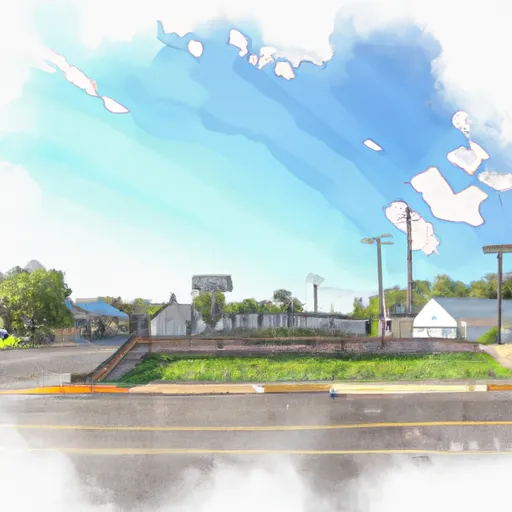-
 Snoflo Premium
Snoflo Premium
Get unlimited access to all our content
With no Ad interruptions! - Start Your Free Trial Login with existing account
Stockville
Eden Index
Climate
7.5
•
Recreation
1.7
•
Community
•
Safeguard
3.6/10

Stockville, Nebraska is a small town located in Frontier County, nestled in the heart of the Great Plains. The climate in Stockville is characterized by hot summers and cold winters. Summers are typically warm and humid, with temperatures often reaching the high 80s and occasionally topping 100°F. Winters are cold, with temperatures dropping below freezing, and occasional snowfall is not uncommon.
As for hydrology constituents, Stockville is situated near the Middle Republican Natural Resources District, which manages water resources in the area. The district ensures a sustainable supply of groundwater for agricultural use, as well as maintaining a balance with other water needs in the region.
Stockville and its surrounding areas offer a range of outdoor recreation opportunities. The nearby Medicine Creek Reservoir is a popular spot for boating, fishing, and camping. The reservoir is well-stocked with various fish species, including walleye, catfish, and crappie, providing ample opportunities for anglers. Additionally, the region's vast prairies and rolling hills offer excellent terrain for hiking, birdwatching, and wildlife observation. Whether it's exploring the natural landscapes or enjoying water activities, Stockville and its surroundings provide a wealth of outdoor recreation options for nature enthusiasts.
What is the Eden Index?
The Snoflo Eden Index serves as a comprehensive rating system for regions, evaluating their desirability through a holistic assessment of climate health, outdoor recreation opportunities, and natural disaster risk, acknowledging the profound impact of these factors on livability and well-being.
Climate Health Indicator (CHI): 7.5
Stockville receives approximately
550mm of rain per year,
with humidity levels near 80%
and air temperatures averaging around
11°C.
Stockville has a plant hardyness factor of
5, meaning
plants and agriculture in this region thrive during a short period during spring and early summer. Most
plants will die off during the colder winter months.
By considering the ideal temperature range, reliable water supplies, clean air, and stable seasonal rain or snowpacks, the Climate Health Indicator (CHI) underscores the significance of a healthy climate as the foundation for quality living.
A healthy climate is paramount for ensuring a high quality of life and livability in a region, fostering both physical well-being and environmental harmony. This can be characterized by ideal temperatures, reliable access to water supplies, clean air, and consistent seasonal rain or snowpacks.
Weather Forecast
Streamflow Conditions
Republican
Area Rivers
Republican
Snowpack Depths
Republican
Reservoir Storage Capacity
Republican
Groundwater Levels
Recreational Opportunity Index (ROI): 1.7
The Recreational Opportunity Index (ROI) recognizes the value of outdoor recreational options, such as parks, hiking trails, camping sites, and fishing spots, while acknowledging that climate plays a pivotal role in ensuring the comfort and consistency of these experiences.
Access to outdoor recreational opportunities, encompassing activities such as parks, hiking, camping, and fishing, is crucial for overall well-being, and the climate plays a pivotal role in enabling and enhancing these experiences, ensuring that individuals can engage in nature-based activities comfortably and consistently.
Camping Areas
| Campground | Campsites | Reservations | Toilets | Showers | Elevation |
|---|---|---|---|---|---|
| Stapleton Village Park | None | 2,896 ft | |||
| Sappa Park | 5 | 2,528 ft | |||
| Arnold Lake State Rec Area | 120 | 2,693 ft | |||
| Lafayette Park | 30 | 2,607 ft | |||
| Sheridan State Fishing Lake | None | 2,536 ft |
Nearby Fishing
Nearby Ski Areas
Catastrophe Safeguard Index (CSI):
The Catastrophe Safeguard Index (CSI) recognizes that natural disaster risk, encompassing floods, fires, hurricanes, and tornadoes, can drastically affect safety and the overall appeal of an area.
The level of natural disaster risk in a region significantly affects safety and the overall livability, with climate change amplifying these risks by potentially increasing the frequency and intensity of events like floods, fires, hurricanes, and tornadoes, thereby posing substantial challenges to community resilience and well-being.
Community Resilience Indicator (CRI):
The Community Resilience Indicator (CRI) recognizes that education, healthcare, and socioeconomics are crucial to the well-being of a region. The CRI acknowledges the profound impact of these elements on residents' overall quality of life. By evaluating educational resources, healthcare accessibility, and economic inclusivity, the index captures the essential aspects that contribute to a thriving community, fostering resident satisfaction, equity, and social cohesion.

